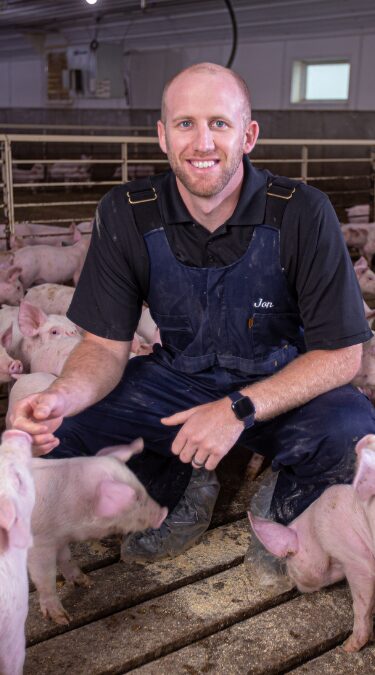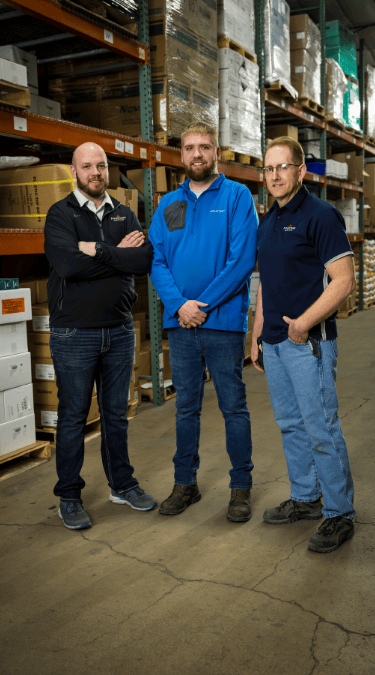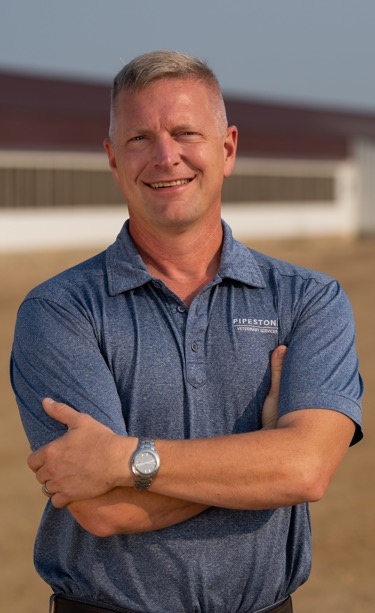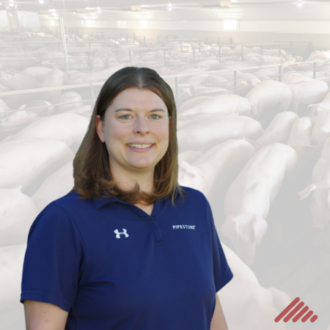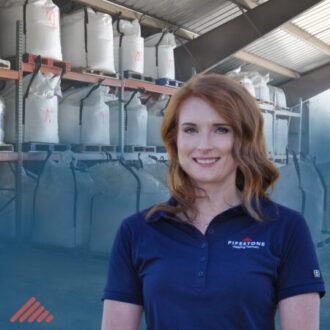When it comes to running a successful wean-to-finish operation, the condition of your facilities is more than just a backdrop—it directly impacts efficiency, animal welfare, and long-term profitability. Future-proofing your farm starts with a strong foundation, both literally and figuratively.
Start With a Facility Audit
Before making any improvements, it’s essential to conduct a thorough facility audit. Evaluating the condition of your concrete foundation, slats or walkways, building joints, and overall structure helps identify areas that may require attention before they become costly problems. Key components such as roofing, ventilation, and the connections between the structure and foundation also play a critical role in the longevity of your buildings. Consider working with a reputable contractor or equipment dealer to obtain expert assessments of both your facility and its products.
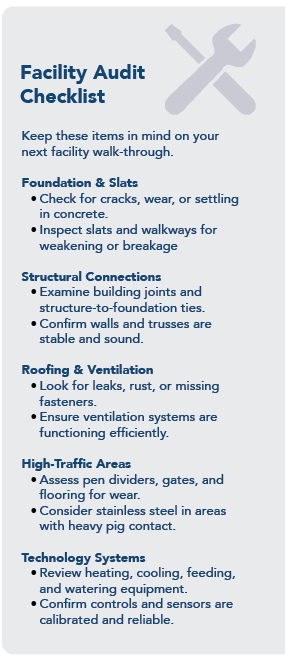
Invest in What Matters
Quality materials translate into durability. Spending time evaluating the balance between cost and quality can save money in the long run. High-traffic areas and spaces with frequent pig contact are particularly susceptible to premature wear—designing these with durable concrete surfaces, slats, and stainless steel components can prevent repeated repairs. Even seemingly small details, like penning design, can affect both animal welfare and ongoing maintenance costs.
Design for Efficiency
Every step counts when managing a farm. Layouts that minimize unnecessary movement for both pigs and staff save time, reduce stress on animals, and lower labor costs. Thoughtful design not only improves day-to-day operations but also extends the functional lifespan of your facilities.
Incorporate Technology Wisely
Proven, up-to-date technology—whether for heating, cooling, feeding, or watering—can limit expenses and increase efficiency. Investing in systems that are reliable and easy to maintain ensures that your facility stays productive while reducing long-term operational costs.
Make Informed Decisions
Every farm is different, which means there’s no one-size-fits-all approach to facility improvements. That’s why it’s important to start with a clear picture of your farm’s current condition. Bringing in a professional to evaluate your buildings provides an objective look at structural strengths and weaknesses—things that might not be obvious in day-to-day chores.
Once you have that baseline, the next step is to gather options. What are the design possibilities? Which upgrades provide the most return on investment? How much will they cost, and what kind of payback timeline can you expect? Having this information allows you to weigh short-term expenses against long-term benefits, ensuring you’re not just fixing today’s problems but preparing for the future.
These details also matter when it comes to insurance. Many insurance providers require proof that facilities meet certain standards. Well-documented assessments and updates not only help keep your operation insurable but also protect your investment if unexpected damage occurs.
Informed decisions are rooted in good information. By combining expert evaluations with a clear understanding of design and cost options, producers can confidently choose the improvements that will deliver the most impact for their farm, both now and in the years ahead.
The Bottom Line
Future-proofing your wean-to-finish operation isn’t about flashy upgrades—it’s about building smart, durable, and efficient systems that support both pigs and people. By starting from the ground up, focusing on high-impact improvements, and making informed decisions, you can ensure your facilities remain productive, safe, and profitable well into the future.

